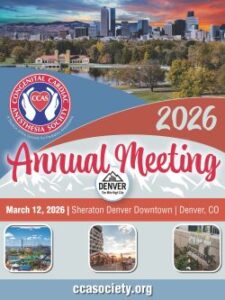Authors: Meera Gangadharan, MBBS, FAAP, FASA - Children’s Memorial Hermann Hospital, University of Texas Health Science Center, Houston, TX
AND
Jehan Elliott, MD - Nemours Children’s Hospital, Sidney Kimmel Medical College at Thomas Jefferson University, Philadelphia, PA
A 2-year-old girl with developmental delay, hypertelorism, low-set ears, and a bulbous nose presents for a transthoracic echocardiogram due to a systolic murmur radiating to the upper left sternal border. A physical exam is normal, and a history of present illness is negative for failure to thrive. Genetic testing demonstrates a mutation in the RIT1 gene. Which of the following subtypes of cardiomyopathy is MOST likely in this patient?
EXPLANATION
Noonan syndrome (NS) is a RASopathy resulting from abnormalities in the RAS/Mitogen-Activated-Protein-Kinase (MAPK) pathway. NS occurs in 1:1,000 to 2,500 live births. Most cases of NS are sporadic, but autosomal dominant forms also occur, leading to multiple cases in one family. Eighty percent of patients with NS will have a cardiac abnormality. Of these patients, 60% will have congenital heart disease and 20% will have hypertrophic cardiomyopathy. The most common congenital heart diseases associated with NS are pulmonary valve stenosis (40%), atrial septal defects (8%), and atrioventricular septal defects (15%). Left-sided lesions such as aortic stenosis, coarctation of the aorta, and mitral stenosis are less common. Combinations of pulmonary and aortic valve stenosis and hypertrophic cardiomyopathy have also been described in NS.
Mutations in several genes can result in NS, including the RAF1, MRAS, and RIT1 genes, which are more commonly associated with a phenotype characterized by hypertrophic cardiomyopathy (HCM). According to one large registry, RASopathies, which include Noonan syndrome, Noonan syndrome with multiple lentigines, Cardiofaciocutaneous syndrome, Mazzanti syndrome, Costello syndrome, Type 1 Neurofibromatosis, and Legius syndrome, are associated with 18% of pediatric HCM. RASopathy-associated HCM differs from sarcomeric HCM in several ways. RASopathy-associated HCM presents earlier in life, at a mean age of six months versus adolescence in sarcomeric HCM. In addition, 24% will have congestive heart failure versus 9% of those with sarcomeric HCM. Finally, patients with RASopathy-associated HCM are more likely to require interventions, such as surgical myomectomy, pulmonary valvuloplasty, and hospitalization for heart failure treatment. Unlike patients with sarcomeric HCM, who experience progression of left ventricular hypertrophy with time, those with RASopathy-associated HCM often experience a reduction in left ventricular wall thickness and myocardial hypertrophy with reverse remodeling as they grow older. The role of the RAS/MAPK pathway in the pathogenesis of HCM has been underscored by the resolution of myocardial hypertrophy in two patients with the RIT1 mutation who were treated with trametinib, an MEK inhibitor that targets the MAPK pathway. A marked reduction in myocardial hypertrophy was seen within four months of treatment with trametinib.
The correct answer is A. Hypertrophic cardiomyopathy is the most common type of cardiomyopathy associated with NS. Over 75% of these individuals have a RIT1 or RAF1 gene mutation. Dilated cardiomyopathy may occur with HCM when patients have progressed to heart failure. The patient in the stem is asymptomatic, making advanced heart failure and therefore dilated cardiomyopathy less likely. Restrictive cardiomyopathy has not been described in NS.
REFERENCES
Linglart L, Gelb BD. Congenital heart defects in Noonan syndrome: Diagnosis, management, and treatment. Am J Med Genet C Semin Med Genet. 2020;184(1):73-80. doi:10.1002/ajmg.c.31765
Lioncino M, Monda E, Verrillo F, et al. Hypertrophic Cardiomyopathy in RASopathies: Diagnosis, Clinical Characteristics, Prognostic Implications, and Management. Heart Fail Clin. 2022;18(1):19-29. doi:10.1016/j.hfc.2021.07.004
Mital S, Breckpot J., Genetic Aspects of Congenital Heart defects. In: Shaddy RE, Penny DJ, Cetta F, Feltes TF, Mital S, eds. Moss and Adams’ Heart Disease in Infants, children and adolescents including the fetus and young adult. 10th ed. Philadephia, PA: Wolters Kluwer; 2022: 98-100
